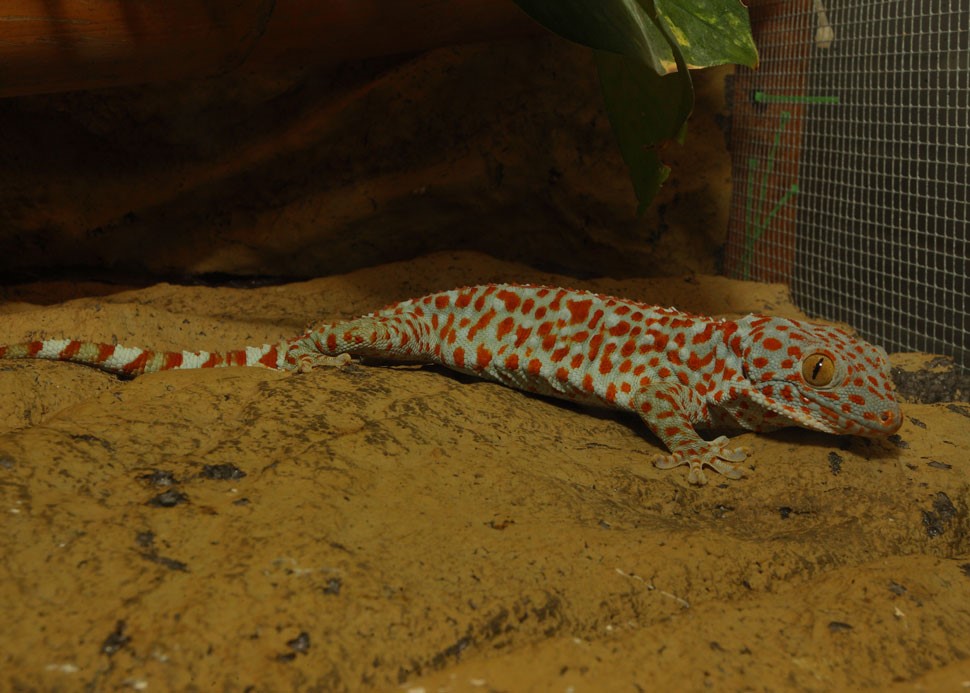Tokay gecko
Gekko gecko
IUCN Status: Least concern

Diet
This a carnivore specialising in eating insects and if it can be seen it is often around dwellings where they ambush night flying insects near electric lights!
Breeding
The female tokay gecko lays one or two hard shelled eggs and along with the male gaurds them until they hatch. Just hatched tokay geckos can eat their sibling and may stay with their parents right up until about 12 months of age.
At The Zoo
We have tokay geckos living in our tortoise internal enclosure. Occasionally they can be seen clinging to the glass windows but this is an extremely shy and light sensitive species! Tremendous numbers are being caught and sold for traditional Chinese medicine and it may be a species in the future that needs protecting.
Habitat
The true wild habitat of the tokay gecko is the rainforest where it lives on cliffs and trees. It occurs in northeast India, Bhutan, Nepal, and Bangladesh, throughout Southeast Asia, including the Philippines and Indonesia, and to western New Guinea. However it adapts readily to the wals and ceilings of human habitation in these areas.
Fun Facts
A true gecko with overlapping foot scales that suction this lizard onto surfaces. It is brightly covered almost as if a child had pinted it purple and spotted it with bright different colors! In the wild you usually hear these lizards before you see them as they bark like a small dog! Possibly the largest gecko in the world!
Behaviour
This is a teritorial, nocturnal and arboreal lizard and hence is incredibly difficult to find in the wild (unless it is in your room)! Native to Asia this is a robust lizard with strong jaws that enable it to crush the exoskeletons of large insects.

